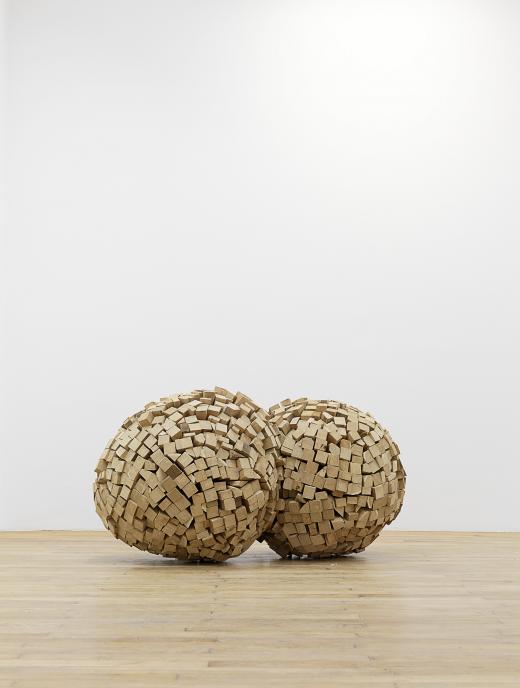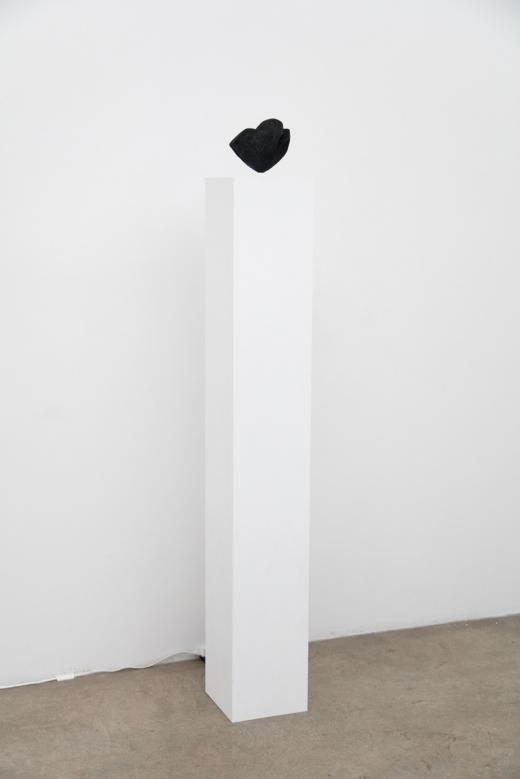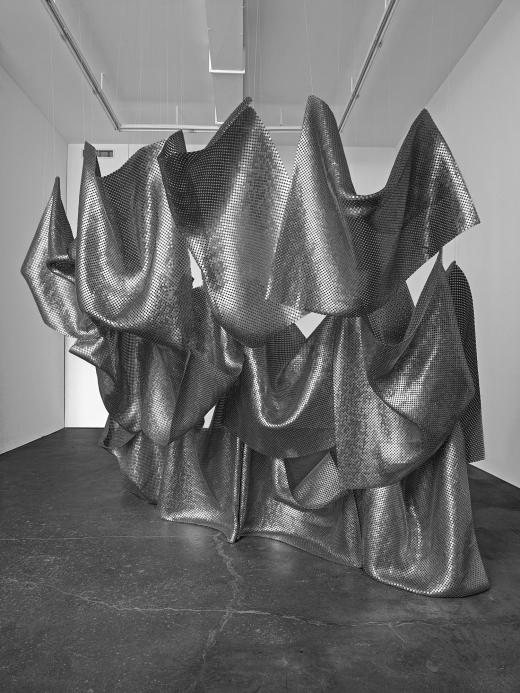MUTATIONS
GALLERY 207
In recent decades, the different facets of space have been as innumerable as the information floating in the air and permeating our homes, intangible. As cities grow vertically, air becomes denser with transmissions and networks. The world of objects becomes remote, giving way to its representations. Today’s art reflects this challenging, complex situation; it seeks to restore the connections between things and the memory they harbor, making a sort of archaeology of the present and exploring their metamorphoses, combinations, and possible places.
The works displayed in this gallery reveal constant fluctuation on the material plane and radical speculation on the conceptual plane. The incessant mutations of the canvas in the work of Ángela de la Cruz contrast with the indiscriminate way in which Jean-Luc Moulène uses all materials; notions from topology, politics, and cultural history collide in his sculptures. With a similar topological underpinning yet a more explicitly scientific focus, the works of Alyson Shotz seek to make the phenomena of physics visible, such as the undulation of spacetime and the entanglement of particles. Meanwhile, Agnieszka Kurant uses the surprising levitation of her meteorites to evoke the convergence of the artistic value of air (since Marcel Duchamp bottled Paris Air in 1919) with its real estate value in today’s economy. In the works by Pierre Huyghe and Asier Mendizabal chosen for this exhibition, emptiness and memory get tangled up in two kinds of operations. Huyghe’s Timekeeper perforates the wall of any space where it is installed to reveal the history of its scenographic transformations. Mendizabal, in turn, starts with Oteiza’s notion of Agoramaquia (fight against the void) to analyze the different states of a sculptural body; here it is lying down, while in gallery 201 it is upright, in its complete form.



